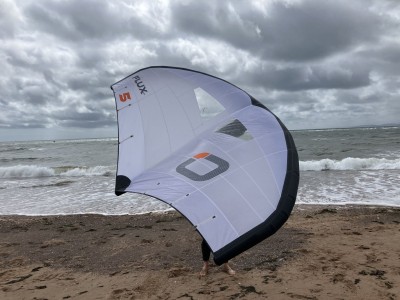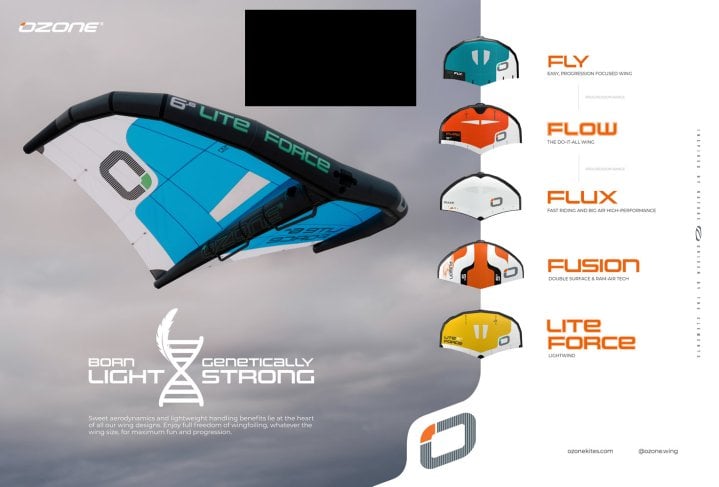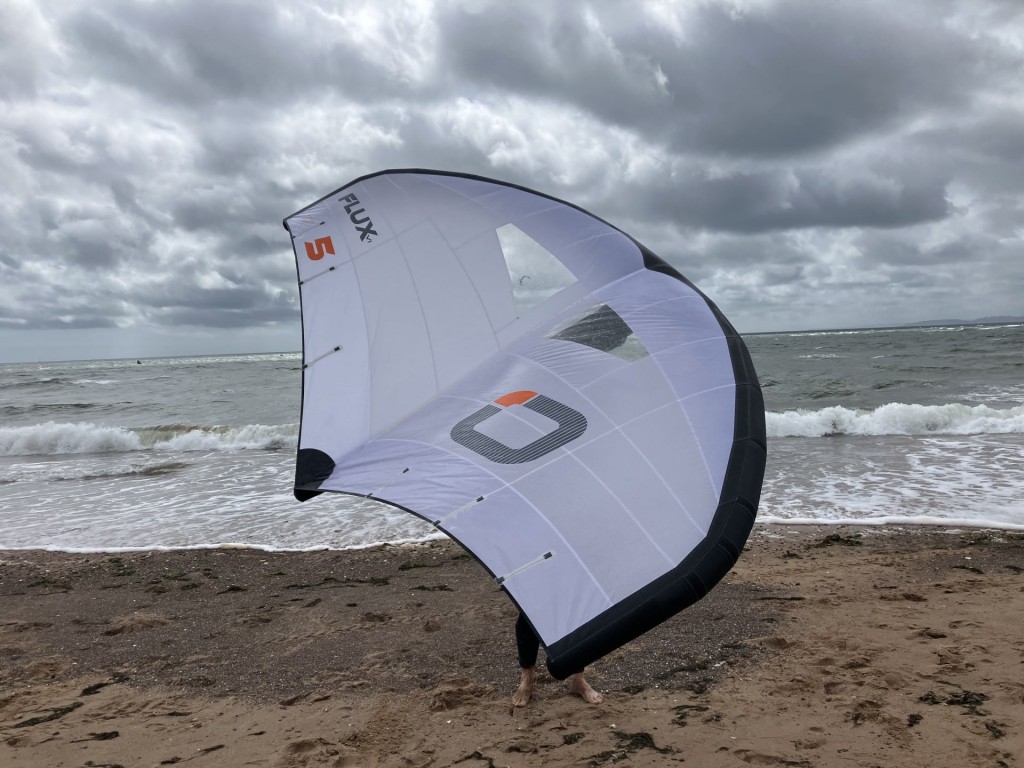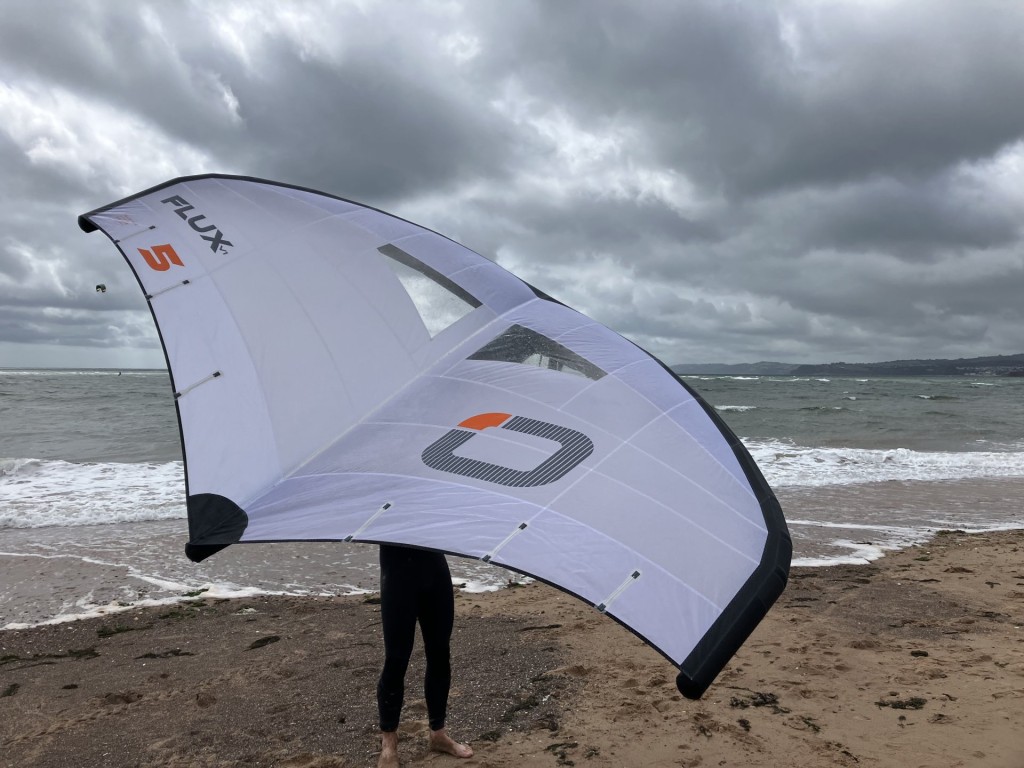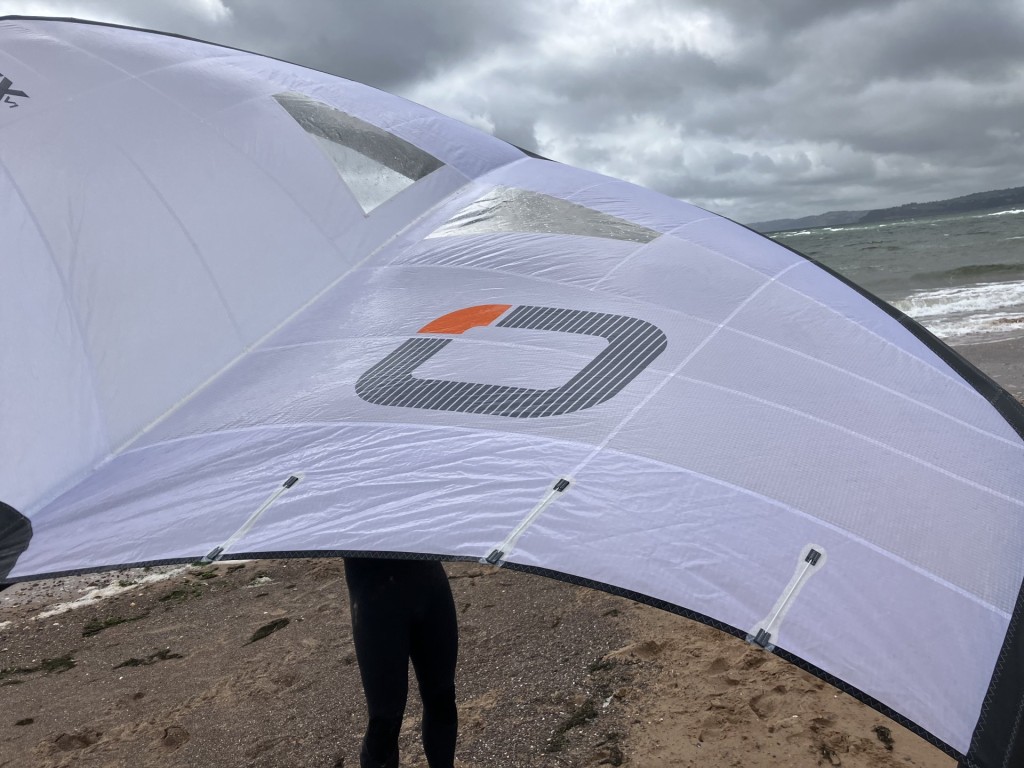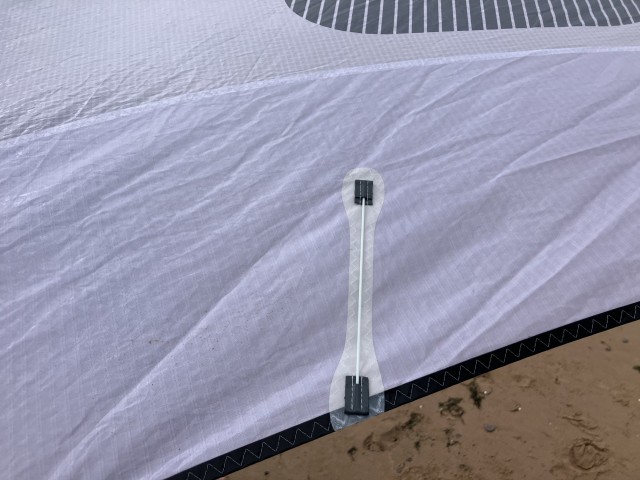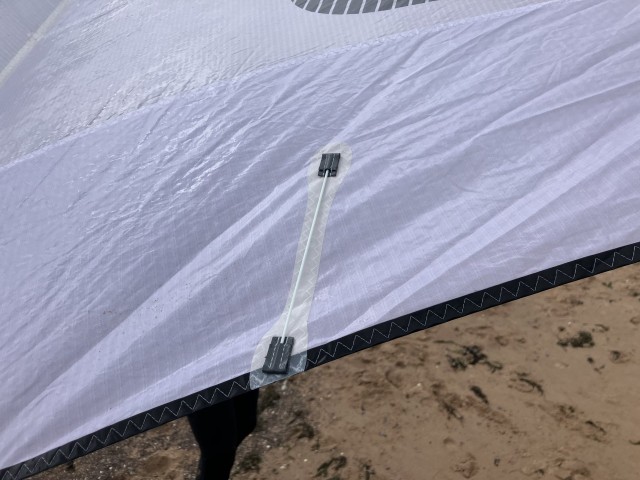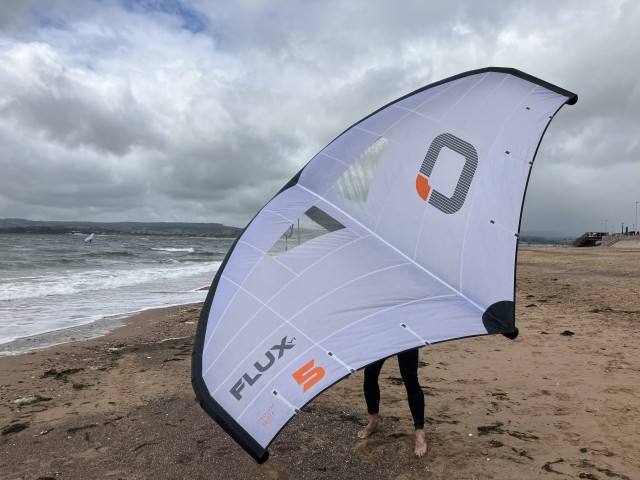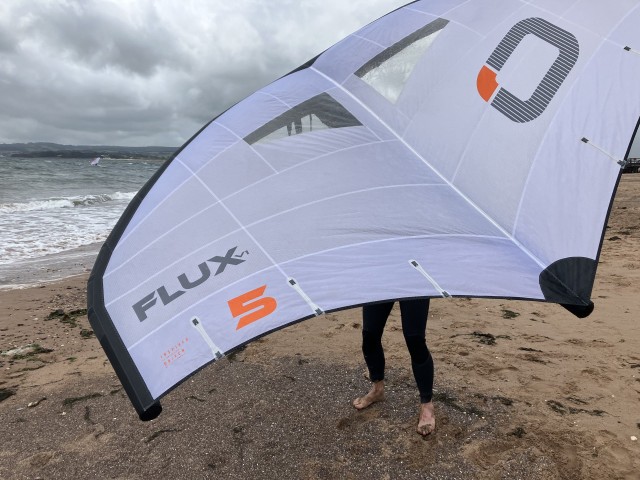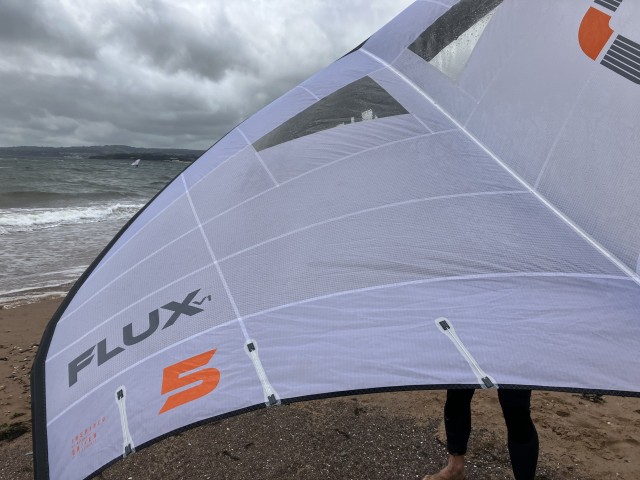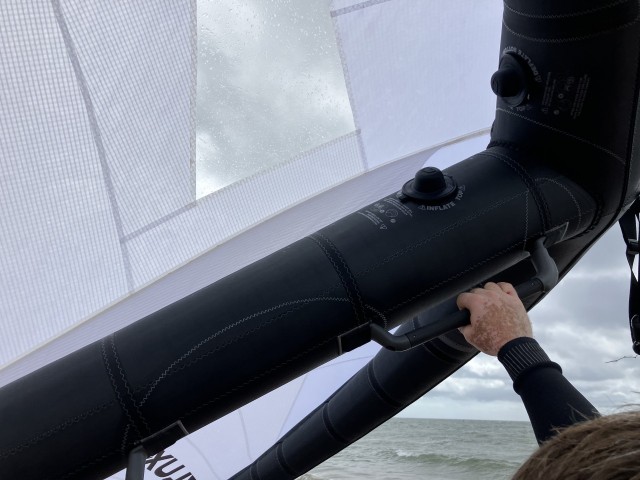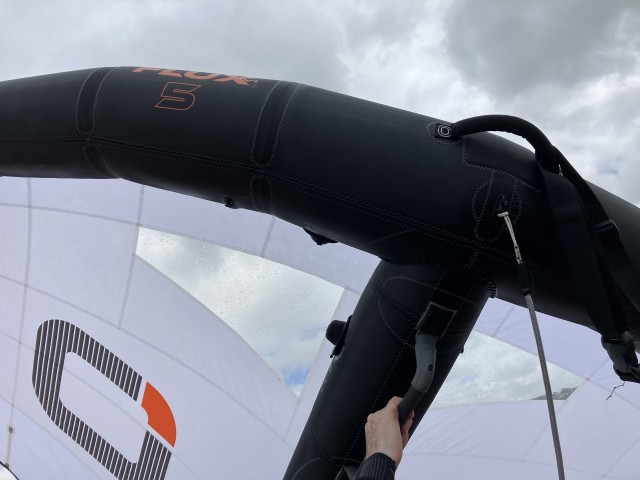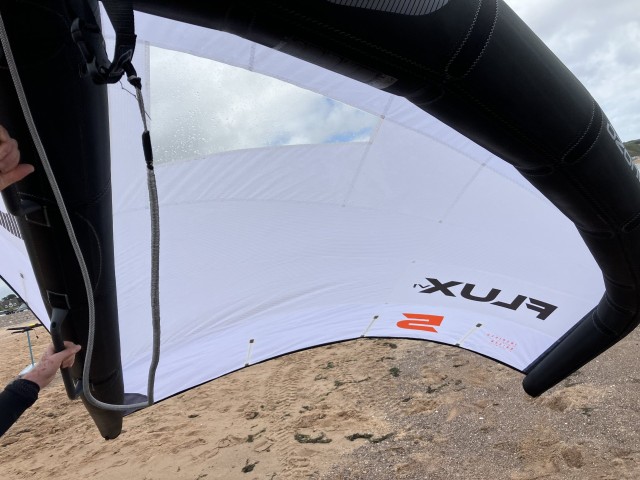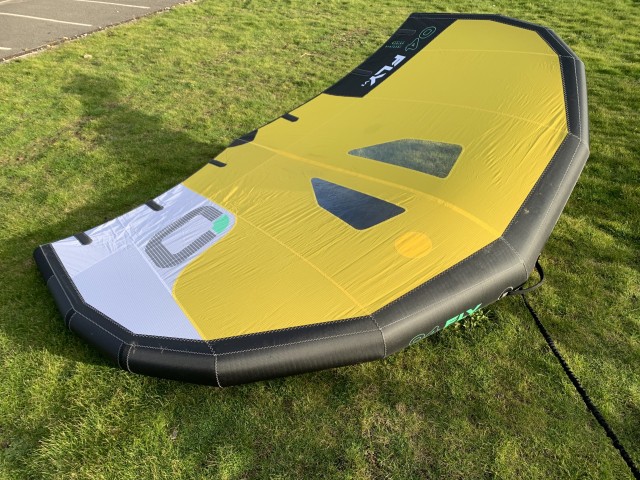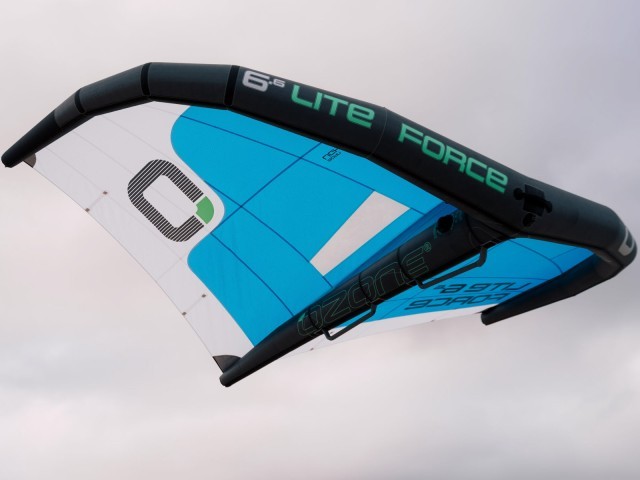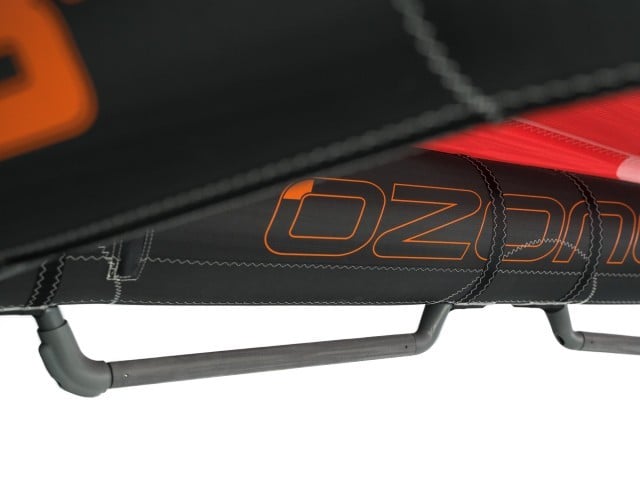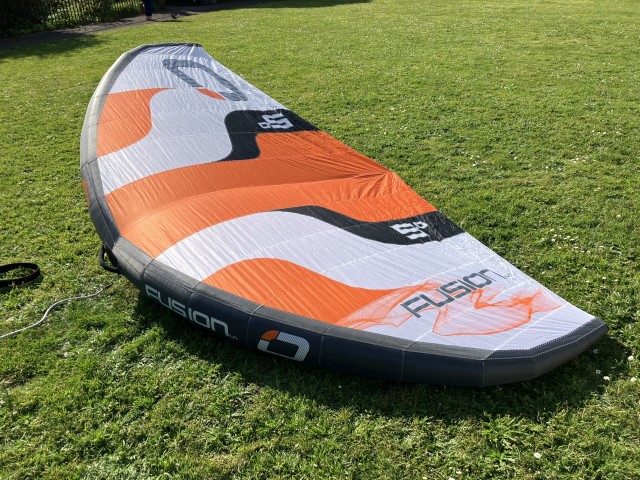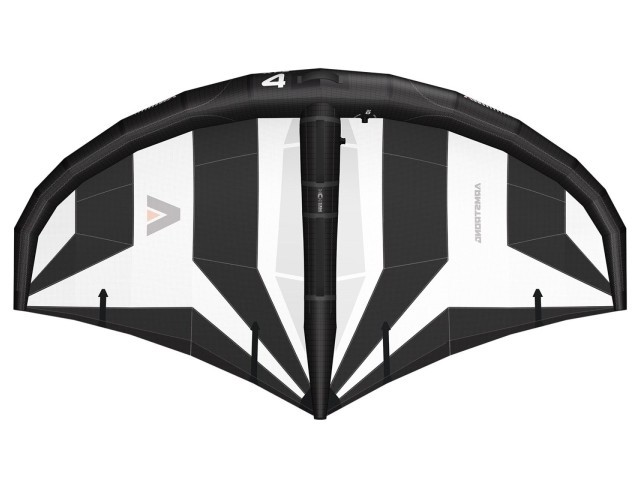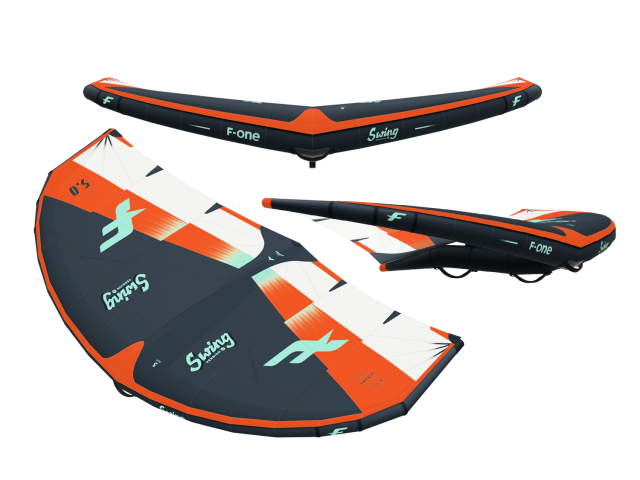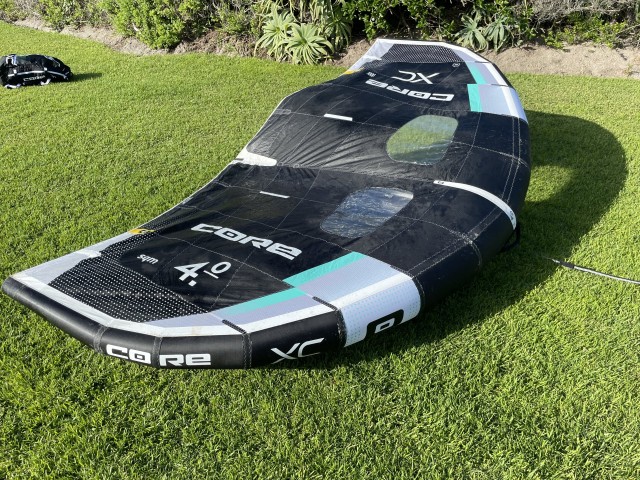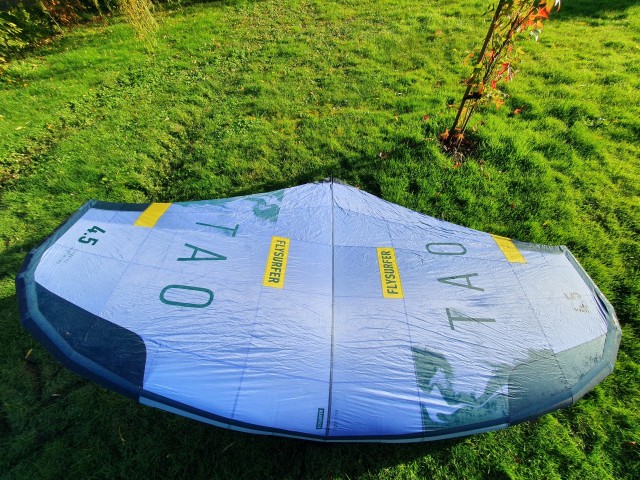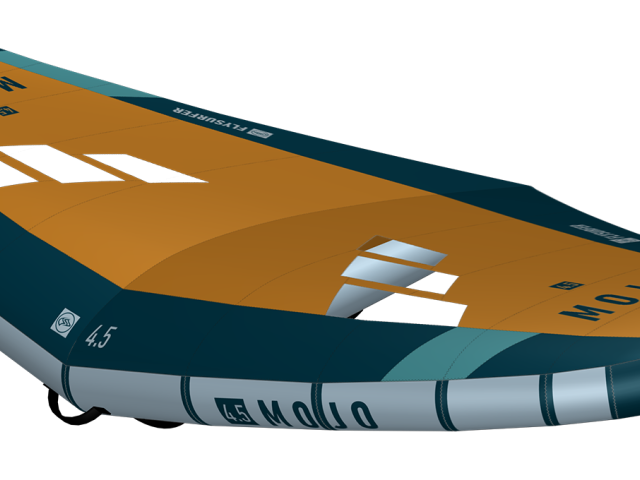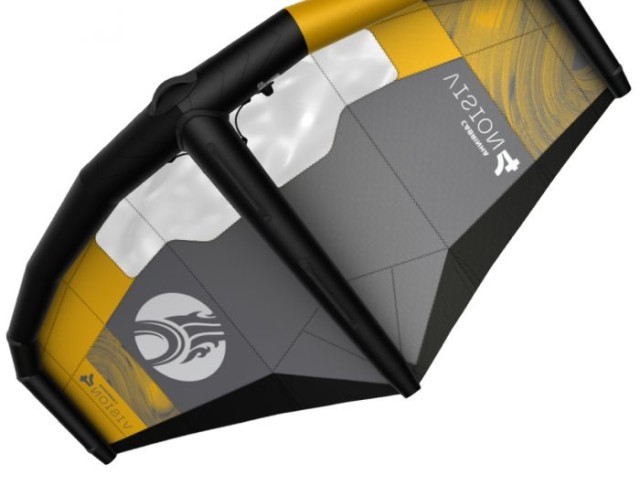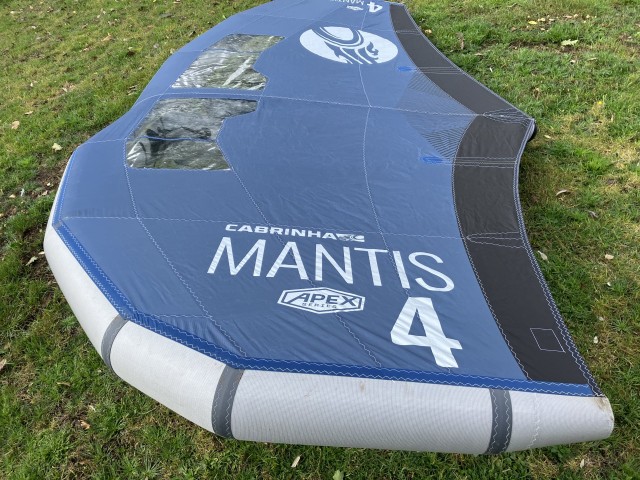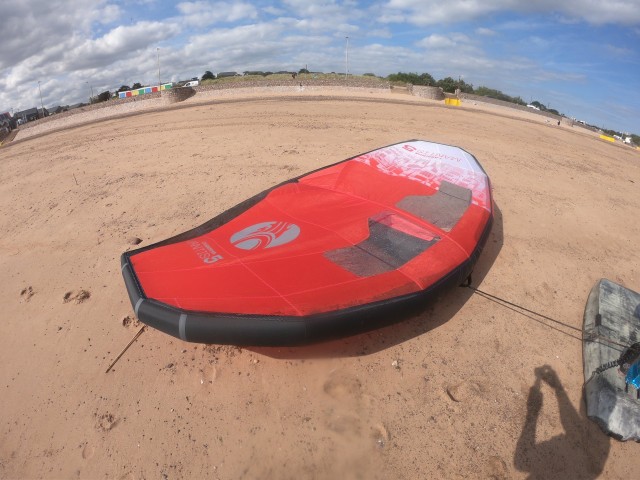At A Glance
When many people think of the Flux (the long awaited high-performance wing from Ozone), they think of insane clips of Johnny Heineken blasting around San Francisco Bay. For some time prior to their release, I’d get sent videos of the unmistakably smooth riding of the double kite racing world champion on sleek white wings. Prior to commercial release, he was already on the podium of race events, having absolutely dominated the competition with production Fluxs. The race influence is prominent in the brand's marketing material too. So, what characteristics will this bring to the table?
Before we get stuck into the details of the Flux on the water, a rundown on the Flux's design and construction details. The Flux leading edge and strut are manufactured using a 125g performance Dacron (20% lighter and stiffer according to Ozone). This has a noticeably different look from the black Dacron used on the WASP and Fly. It looks dark grey, with a slight shine, and in combination with the white canopy material, it is a smart looking wing.
Ozone’s pursuit of aerodynamic efficiency is obvious. The Flux has an incredibly smooth leading edge arc thanks to the high segment count and the craftsmanship of Ozone’s own factory team. The segment seam reinforcement is both smooth and extremely tight to the profile. Most watersports pundits could identify an unbranded Ozone product from the build quality alone, and the Flux is no exception. The stitching is extremely accurate, the seam finishes are tight and tidy, the main hard handle attachment points are stiff and well reinforced. Not a thread is out of place, and the end result certainly gives off high performance vibes.
On The Water
From the get go, the power available from the Flux is very obvious, it really took me by surprise. The wind was not particularly strong at the beginning of my first session and I was up on foil before I’d even made an effort to get my feet in the right position. Throughout the session, I had the confidence to try new maneuvers or get aggressive in the waves, knowing that getting going again would be effortless. This applies to both ‘sheet and go’ starts and pumping the wing.
The Flux is a very easy wing to get used to. It responded to steering inputs quickly without much effort, was comfortable during tacks and gybes, and was stable when transitioning onto the depower handle for wave riding. It is comfortable to ride for long durations thanks to being so composed in all positions of trim, which allows you to always dial into a comfortable level of power with no loss of feedback or performance. The hard handle positioning and angle made for a natural body position while riding, and the position felt intuitive during maneuvers. The load was well distributed between the front and back hands, though I would have preferred if the handles profiles weren’t round, as I tend to prefer teardrop or ergonomically moulded hard handles.
The tacking performance of the Flux really stood out. A lot of wings feel very draggy once you commit to riding into the wind and slow you down quickly, but not the Flux. It was easy to get the wing above your head and towards the other direction to initiate the maneuver, and it had minimal drag as you rode through the wind. This will be very much appreciated by all riders, whether they are learning, or advanced and looking to execute maneuvers quickly under pressure in more critical situations and be able to come out with speed.
Unsurprisingly, given the race design influence, the Flux had one of the best available upwind angles of all the wings I have ridden. It effortlessly pinches the wind very tight and doesn’t ever feel like it is about to backwind. It also generates speed rapidly when you sheet in and it never feels like it is about to stall. Riding in small wave, cross-onshore conditions, I loved the ability to spot a small bump in the distance and power up the wing quickly for a burst of speed before transitioning to the depower handle and gliding toward the wave with all the speed. When overpowered, the wing remains stable and predictable at low angles of attack and still provides forward speed even when you're applying very little backhand pressure.It is definitely a wing with a big wind range.
It is a very preferential subject, but I did find the depower handle a bit chunky and less rigid than competitors, which was noticeable when transitioning back and forward regularly in small waves. I was happy once I was on the depower handle however, and the wing itself performed very well. It was balanced and light when flagging and showed no sign of wanting to invert, so the tips were easy to keep clear of the water. Its ability to stay horizontal when riding very downwind was good, though it behaved more favourably when you had enough speed to really commit to the wave as it was easy to push the Flux behind you. When ready to re-engage, raise your hand whilst riding across the wind and the wing was blown back in front of you ready to go.
In Conclusion
Having witnessed the racing influence on kitesurf gear in the past (which typically made products faster at the expense of ease of use for the average rider), I was a little worried the same might be true with the Flux. How wrong I was. The Flux is a very intuitive wing with a lot of the friendly DNA of the WASP but with much more speed potential and minimal drag when flagging and tacking. Whilst it has the potential to go fast, it's up to you how much you push it and I can’t think of any category of rider to whom I wouldn’t recommend having a ride on the Flux to experience it for themselves.
Videos
This review was in Issue 17 of Tonic Mag.
For more information visit OzoneRelated
By Tonic Mag


